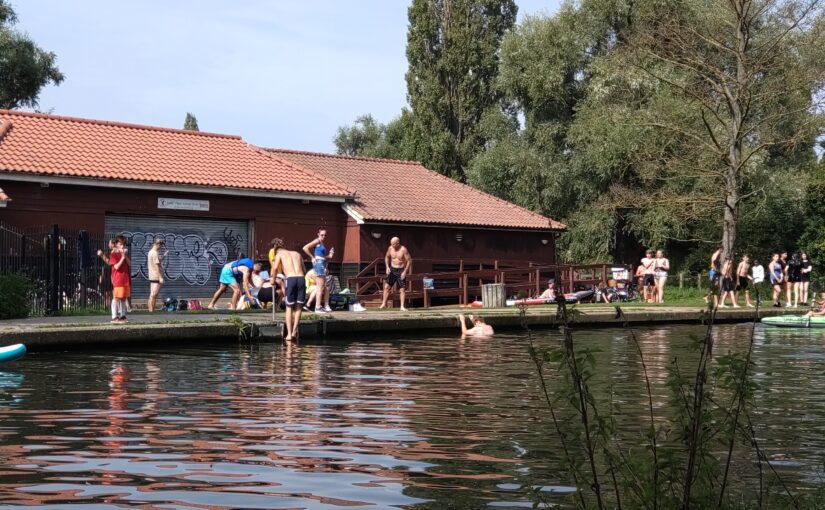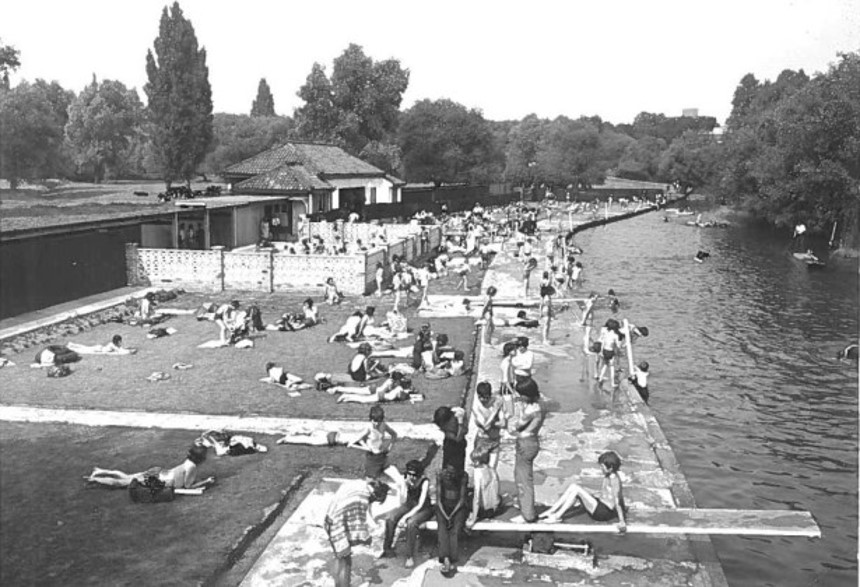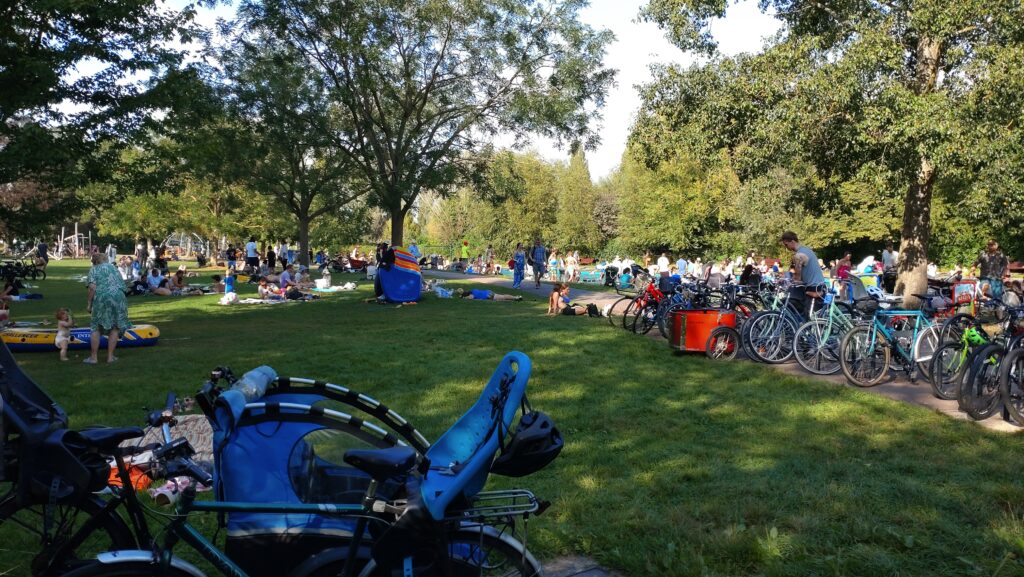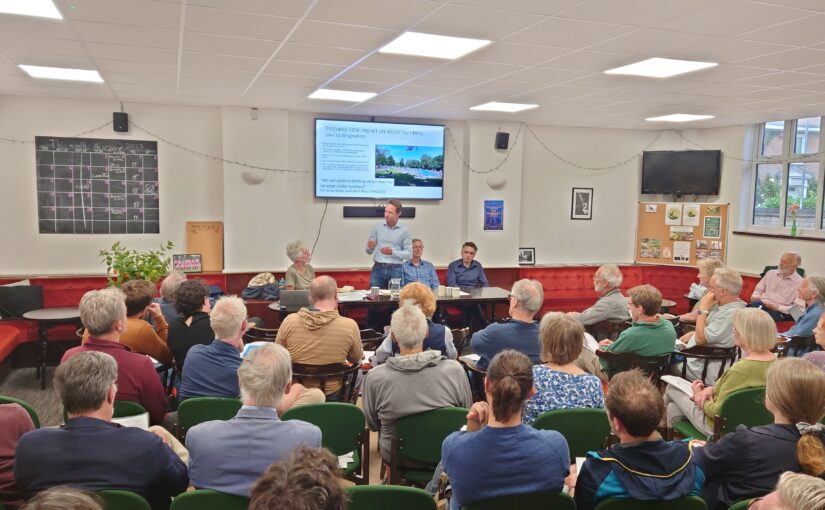Over 100 people punted and paddled out in Cambridge on the River Cam, from the Mill Pond to Kings College Backs, to demand an end to sewage pollution.
A selection of the photos and videos from the protest are available here.
Over 100 people and over 25 water craft, including 11 punts, participated in the initial rally at the Mill pond.

The flotilla then punted and paddled to Kings College backs, accompanied by singers…. The song “Anglian Water: Clean it up” was specially composed by Rowena Whitehead
The flotilla went on and on….
The 11 punts carried the “Chalk Dream” hangings. These were created by the charity Cambridge Curiosity and Imagination with local children and their communities.

On arrival at Kings College Backs, Michael Goodhart said a few words about the 400 year history of swimming on the Cam, then actor and director Chris Hudson, read the poem “Waterbodies” by poet Kaddy Benyon from a punt. Kaddy says “This is a found poem produced by erasing some of the foreword to Anglian Water’s Pollution Incident Plan 2020-2025 by the CEO of Anglian Water“

Introducing the event, Anne Miller, co-chair of Cam Valley Forum said
“Over 100 people and around 25 water craft, including 11 punts are gathered here in Cambridge, along with thousands of people who are gathering by their rivers and seas today, from Cornwall to Scotland, to show that we want an end to sewage pollution on our waters.
Water companies, and Anglian Water is no exception, are continuing to dump untreated and minimally treated sewage straight into our waterways, polluting our rivers and seas, putting human health at risk and destroying vital ecosystems that support life on earth.
There are now signs up at Sheep’s Green, just upstream of here, saying “bathing is not advised” because last year the river was so polluted with bacteria from poo.
We know that much of this pollution is coming from Haslingfield Sewage works, just 5km upstream. This takes sewage from 13,000 people in the upstream villages, but it is old and overloaded. Last year, it was overflowing for 1/3rd of the time. The sewage pumping stations in the villages overflow when it rains. The big, pressurised pipes, which take the raw sewage from the villages to the sewage works keep bursting. And even when the sewage works is working “well” its 10 times worse at treating the sewage than the main Cambridge one.
But it’s not just the Water Companies.
While they continued to pollute and pay huge dividends to their shareholders and bonuses to their CEOs, the Environment Agency has been steadily cut to the bone. For 30 years, we’ve had a regulatory system that’s completely dysfunctional.
Far from forcing water companies to make the investments needed to keep our rivers healthy, the system discourages investment. Instead, politicians told Ofwat to prioritise lower bills while letting polluters profit. But now we’re waking up. We are paying the price. People are getting sick.
The system is crazy. Here in Cambridge, we, Cam Valley Forum, had to jump through the hoops to get Bathing Water Designation because that was the only way to get the regulators to both permit, and require, Anglian Water to invest and improve the upstream sewage treatment. They tell us we should now see a significant improvement, but it’s going to take 5 years….. That feels like a long time to wait, for something we should have had already. So we want Haslingfield fixed fast.
But the government is promising reform. A big consultation has just finished, and they will be announcing changes to the regulatory system soon. But we know there will be industry lobbyists resisting change. That is why we’re protesting today, to show government that we want them to be bold
We want a regulatory system that forces water companies to invest, and takes account of the needs of all water users and the wider environment, not just swimmers.
We want to be able to swim, paddle, kayak, row and punt, without the fear of getting sick.”
The Cambridge protest was organised by Cam Valley Forum, Cambridge Canoe Club, and Cambridge Curiosity and Imagination. We’re grateful for the help of lots of other volunteers, the artistic creators of the many different placards and props, as well as Scudamores for the punts.
It was one of around 50 protests round the UK on 17 May 2025, organised by Surfers Against Sewage demanding to #endsewagepollution
Our protest was the lead story on ITV Anglia news on Sunday 18 May














































